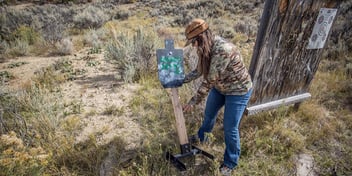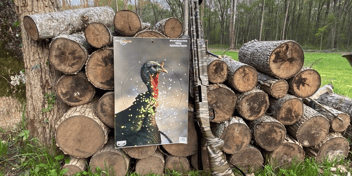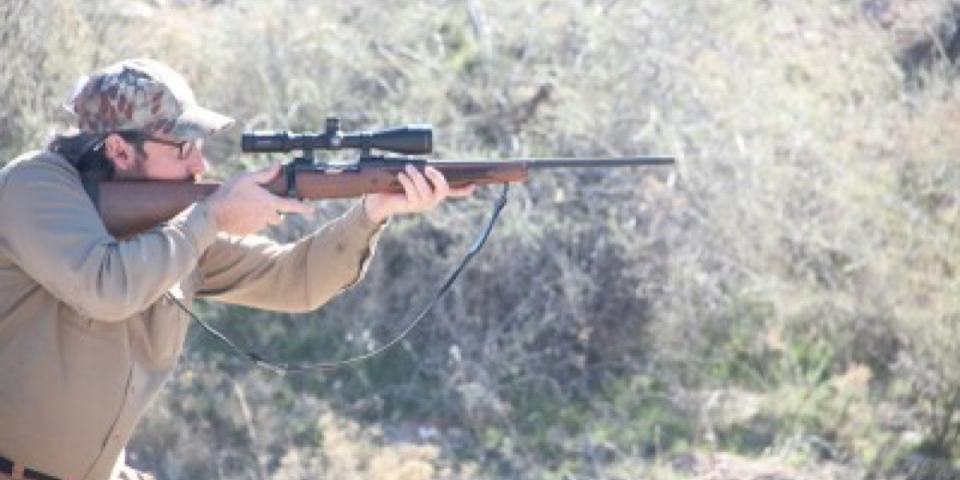
When shooting offhand, let the sling hang. If you wrap up in it, it acts as a lever and your support hand a fulcrum causing side-to-side wobble.
It sure would be nice if there was some way to take a stable shooting bench and sandbag rests with us for every shot we took in the field. But outside of setting up for a day of shooting over a prairie dog town, that’s not likely to happen. Instead, hunters are more likely to use improvised rests such as backpacks or boulders and, when nothing is available, shoot from positions varying from offhand to prone depending on the shot and terrain.
While not nearly as stable as shooting from a bench, there are things you can do to make field positions more stable. For example, when shooting offhand, simply let the sling hang. I’m a right-handed shooter and I used to wrap my sling around my left arm thinking it made me more stable, but it turns out that makes the sling into a lever and your hand a fulcrum on which you rifle teeters.
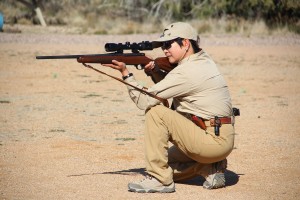
Sit on your rear foot, use bones for support and the isometric tension of a sling for steady position shooting.
The foundation for the various kneeling, sitting, squatting and prone positions is your natural point of aim. Natural point of aim is when the rifle naturally points toward your target without any adjustment from you. You find it by getting into position, closing your eyes and relaxing. When you open your eyes, if your gun isn’t pointing at the target, move your whole body until it does. With practice, you’ll learn this natural point of aim and it will come automatically when you get into position.
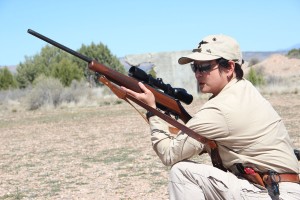
Gunsite’s Il Ling New demonstrates pulling the Peabody sling up to your armpit when getting into shooting position.
Once in position, stability comes from your bones, but not bone-on-bone contact because that’s wobbly. If you’re shooting from braced kneeling, you want to sit on your rear foot and form an I-beam with your forward leg and support arm. Don’t put your elbow directly on your knee because bone-on-bone contact is wobbly. Instead, put your elbow slightly in front of your knee. Likewise, from squatting or sitting, instead of putting your elbows on your knees, put them inside your knees, or in front so your triceps are on your knees and if squatting, make sure your feet are flat on the ground.
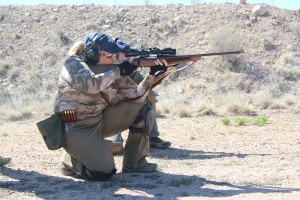
When shooting from braced kneeling, place your elbow either in front of your kneecap or on your thigh—never directly on your kneecap.
Once in position, I can’t emphasize enough the importance of a sling for increasing stability. It’s not just a carry strap. Most of my life I managed using a “hasty” sling simply wrapped around my support arm, but recently I discovered the Peabody-style sling and find it much more stable. With this sling, you pass your arm through it so the sling pulls backward on the rifle instead of the hasty sling, which pulls the rifle to the side.
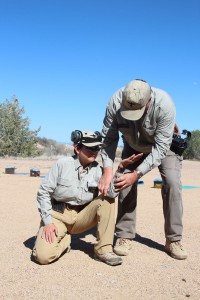
When shooting from braced kneeling position, form a bone-based I-beam with your forward leg and support arm with your elbow forward of the knee.
With your natural point of aim, a solid bone-based position and the isometric tension of the Peabody sling, you will be more stable in positions, but it’s not enough just to know you’ll be more stable—you have to practice shooting from positions. When I’m shooting my Mossberg Patriot, I’ll start by firing a few shots from the bench just to make sure something hasn’t gotten knocked off since my last range trip, but then that’s it for the bench. I already know how great the rifle shoots. After that, it’s all position shooting so I can tell how well I shoot, and limit my shots on game based on that.
By Scott Mayer

